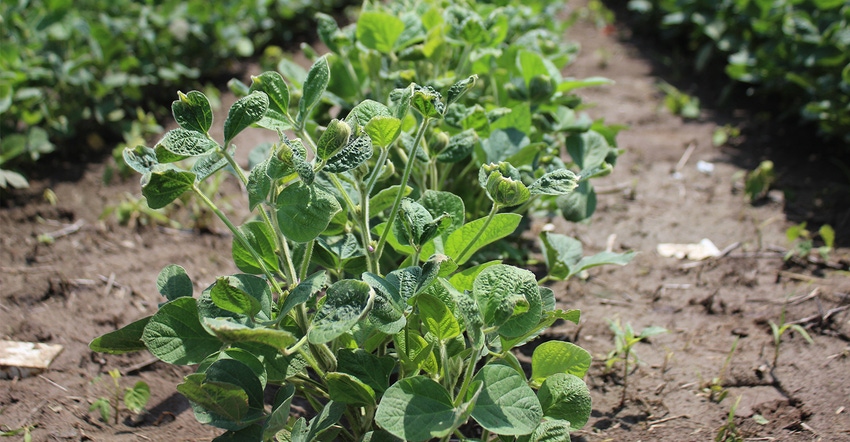
Farmers facing off-target dicamba injuries in soybean fields struggle with their next move, in part due to speculation, and hesitation, regarding crop insurance coverage implications. Understanding how insurance may factor into off-target dicamba yield loss is a critical piece to this complicated puzzle, says Dave Brown, Insurance Providers Group.
Brown shares six things to consider about insurance and off-target dicamba damage:
1. The damage is not natural. Federal crop insurance is not an option, Brown says. “Naturally-occurring instances are the only ones covered under the federal Multi-Peril Crop Insurance (MPCI) program,” he explains.
2. Chemical damage is uninsurable. Acres submitted to MPCI insurance companies for chemical injury are uninsurable under the federal program, but Brown says farmers should consider submitting claims in another manner. “I think of it this way,” he explains. “Farmers who take a 75% level based on their 10-year history are giving up 25% before a claim is paid. If you have chemical damage that takes 10% off your yield right off the bat, report that to the Illinois Department of Agriculture, and pursue another channel to recoup payments for loss.” Like what? Liability insurance.
3. Liability insurance comes into play. Liability insurance may cover yield loss, Brown explains. Custom applicators typically carry liability insurance, and individual farm operations should have similar coverage. The challenge is pinpointing the dicamba source when temperature inversions are to blame for the off-target damage.
“That will be the problem. It’s like a hit-and-run accident,” Brown says. “One difference we’re seeing now with dicamba is the size of the challenge. A drift issue often covers one corner of a field, or maybe a few neighboring rows. The photos I’ve seen appear to cover areas of a larger nature.”
4. Be proactive. What’s the key to a successful liability claim? Documentation. Farmers should take several dated photos, write down observations and conversations regarding the situation, and be prepared to show comparative yield data, Brown says. Time-stamp records by emailing the photos and notes to yourself for a trackable history.
5. Be honest. “The facts and the situation, while unpleasant, are on the side of the farmer until they choose to withhold information,” he says. “Please don’t expect to ‘sneak’ in a chemical claim on your MPCI policy.” MPCI claims require a documented, weather-related reason upon submission. “Adjusters will ask what happened and get yield data from neighboring fields, if necessary,” he adds.
6. APH will be impacted. If the chemical injury impacts final yield results, it will affect the farm’s 10-year actual production history. “APH will be affected, no matter what,” Brown notes.
Farmers should work with their insurance agent to review coverage options and for help with decisions moving forward.
“Production agriculture best benefits when our core of well-meaning individuals and businesses work through successes and challenges together,” Brown adds. “Do your part!”
About the Author(s)
You May Also Like




